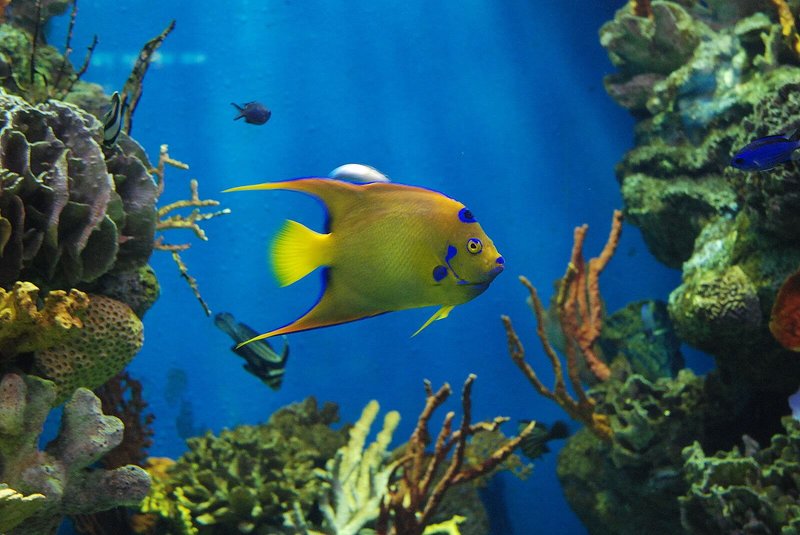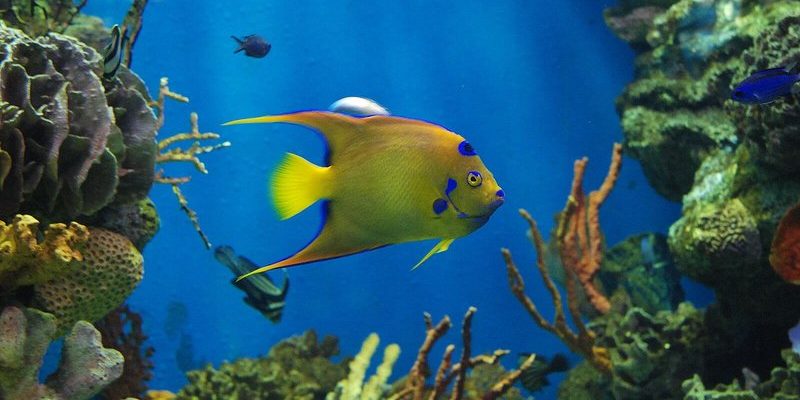
Angelfish are mostly known for their captivating beauty and unique shapes, which can make them the stars of an aquarium. But understanding their natural habitats can give us insight into how they thrive. Whether you’re an aquarium enthusiast or simply someone who appreciates these lovely fish, knowing where they come from adds a layer of appreciation. So, let’s dive into the different environments where angelfish are found!
Angelfish in the Oceans
You might picture angelfish swimming gracefully in tropical waters, and you’d be spot on! Many species are native to the coral reefs of the Pacific and Atlantic Oceans. These reefs are like bustling underwater cities, teeming with life. Here, angelfish find shelter among corals and other marine plants, which provide food and protection.
Coral reefs are also vital for the ecosystem. They help maintain biodiversity and act as a nursery ground for many marine species. The presence of angelfish signifies a healthy environment. So, when you see them fluttering about, it’s a good indication that the reef is thriving. Typically, they prefer shallow, warm waters where sunlight can reach, making it easier for algae and plants to grow—essential food sources for these fish.
Interestingly, angelfish are social creatures. They often swim in pairs or small groups, showcasing their vibrant colors. The emperor angelfish, for example, flaunts a stunning blue and yellow pattern that’s hard to miss. Imagine swimming alongside such beauty!
Angelfish in Freshwater Rivers
Now, you might be surprised to learn that not all angelfish are ocean dwellers. Some versions, like the well-known Pterophyllum scalare, call freshwater rivers and lakes home. These angelfish are most commonly found in the Amazon River Basin, particularly in slow-moving waters and floodplain lakes.
The Amazon is a vital ecosystem, filled with diverse wildlife and unique plants. It’s a fascinating place where the water is rich in nutrients, ideal for angelfish. They prefer warm waters with plenty of vegetation, which offers hiding spots and breeding grounds. You might wonder how these angelfish adapt to life in rivers compared to their oceanic cousins. Well, rivers have different currents, and these fish have adapted by developing body shapes that streamline their movement.
When exploring such habitats, it’s essential to understand the *importance of conservation*. With threats like deforestation and pollution, these ecosystems are at risk. Protecting their habitats ensures future generations can enjoy the beauty of these fish.
The Role of Habitat in Angelfish Lives
Let’s take a moment to think about habitat. It’s not just about living space; it’s where angelfish find food, shelter, and mates. In both oceans and rivers, habitats are crucial for the health and well-being of angelfish. Coral reefs and riverbeds provide the necessary resources they need to survive.
In marine environments, angelfish often feast on algae, sponges, and small invertebrates. They use their specialized teeth to scrape food from surfaces. In contrast, freshwater angelfish might munch on plants and small crustaceans. Each habitat shapes their diet and, in turn, their behavior.
Different habitats can also influence the colors and patterns of angelfish. Those from bright coral environments might be more colorful, while those in murkier river systems may feature softer, more muted tones. It’s nature’s way of helping them blend in and thrive!
Angelfish Behavior and Adaptability
You might be wondering, how do angelfish thrive in such varied environments? Their adaptability is one of their most impressive traits. In the wild, angelfish have developed different behaviors based on their habitat. For example, oceanic angelfish often seek out shelter in coral structures to evade predators, while freshwater angelfish may hide among plants or rocks.
Angelfish are also known for their territorial nature. In both oceans and rivers, they establish territories that they defend aggressively. This behavior is essential during breeding seasons when they want to protect their young. The way they behave and interact with their surroundings can be fascinating to observe—like a drama unfolding underwater!
However, adaptability doesn’t mean they’re invincible. Changes in their environment—like pollution or habitat destruction—can have dire consequences. This reality highlights the importance of protecting their habitats, whether in oceans or freshwater systems.
The Importance of Conservation
When thinking about where angelfish are found, it’s crucial to consider *conservation efforts*. Coral reefs and freshwater habitats face numerous threats, including climate change and human activities. These challenges can lead to habitat loss and reduced fish populations, which is concerning not just for angelfish but also for the entire ecosystem.
Organizations worldwide are working hard to protect these habitats. Marine protected areas in oceans help shield coral reefs, while freshwater conservation efforts focus on maintaining river health. As someone who appreciates the beauty of angelfish, you can play a part too—support sustainable practices and raise awareness about habitat preservation.
Every little effort helps ensure that future generations can witness the beauty of angelfish in their natural environments. After all, who wouldn’t want to see these vibrant fish swimming gracefully in their habitats for years to come?
Where to See Angelfish
If you’re itching to see angelfish up close, there are plenty of environments to explore! Aquariums are a great place to start. Many public aquariums feature angelfish in beautifully designed exhibits that mimic their natural habitats. Watching them swim freely will deepen your appreciation for their stunning colors and behaviors.
For the adventurous, consider diving or snorkeling in tropical locations. Places like the Great Barrier Reef or the Caribbean are famous for their rich marine life, including angelfish. Just remember to be respectful of their space by avoiding touching or disturbing the reefs.
If freshwater is more your style, check out the Amazon River through eco-tours that focus on sustainable experiences. These tours can offer a firsthand glimpse of angelfish in their natural habitat while supporting local conservation efforts.
Angelfish inhabit some of the most beautiful and diverse environments on our planet, from vibrant coral reefs to serene freshwater rivers. Understanding where they are found helps us appreciate their beauty and the importance of protecting their habitats. Whether you’re an aquarium aficionado or someone who simply loves exploring nature, angelfish are a testament to the wonders of our aquatic ecosystems.
Let’s cherish these captivating creatures and their homes so we can continue to admire them for years to come. After all, the world beneath the waves is a treasure trove of beauty waiting to be discovered!

